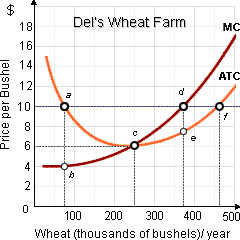When for wheat the world price is $10 per bushel, and Del, who one owns the biggest wheat farm into North Dakota, will work at: (i) point a. (ii) point b. (iii) point c. (iv) point d. (v) point f.

Please choose the right answer from above...I want your suggestion for the same.